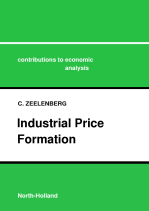 Industrial Price Formation: Summary Part II
Industrial Price Formation: Summary Part II Industrial Price Formation: Summary Part II
Industrial Price Formation: Summary Part IIIn Part 2 (Chapters 4 and 5), price formation under pure competition is studied. In Chapter 4 I analyze the law of one price for a small open economy. I assume that each tradable domestic product is traded in a perfect world market, so that the foreign price (measured in domestic currency) is equal to the domestic price. Because of the small-country assumption, we can interpret this equality as a causal relation: the foreign price determines the domestic price. The equality of foreign and domestic prices is important in monetarist models of the balance of payments [Johnson (1972, p. 153-4)] and in `Scandinavian' models of price formation [Aukrust (1970, 1977), Edgren, Faxén, and Odhner (1970), and Calmfors (1977)]. The law of one price is analyzed for five commodity groups; the results show that the law of one price holds only for Fuels. Also the effects that aggregation has on testing of the law of one price are analyzed.
A possible explanation of the failure of the law-of-one-price model is that domestic and foreign products are not perfect substitutes. In Chapter 5 I construct a general-equilibrium model where domestic and foreign goods are not perfect substitutes; the law of one price is a limiting case of this model. I show that if a country is small and open, then the prices of foreign goods are exogenous, but the prices of domestic goods are not exogenous. The result rests on the fact that exports of a small open economy are small as compared to income of the rest of the world. After specification of consumer preferences and producer technology by two-stage CES functions I estimate the model on the same data as have been used in Chapter 4. The empirical analysis shows that actual price changes are better explained by this model than by the law of one price.